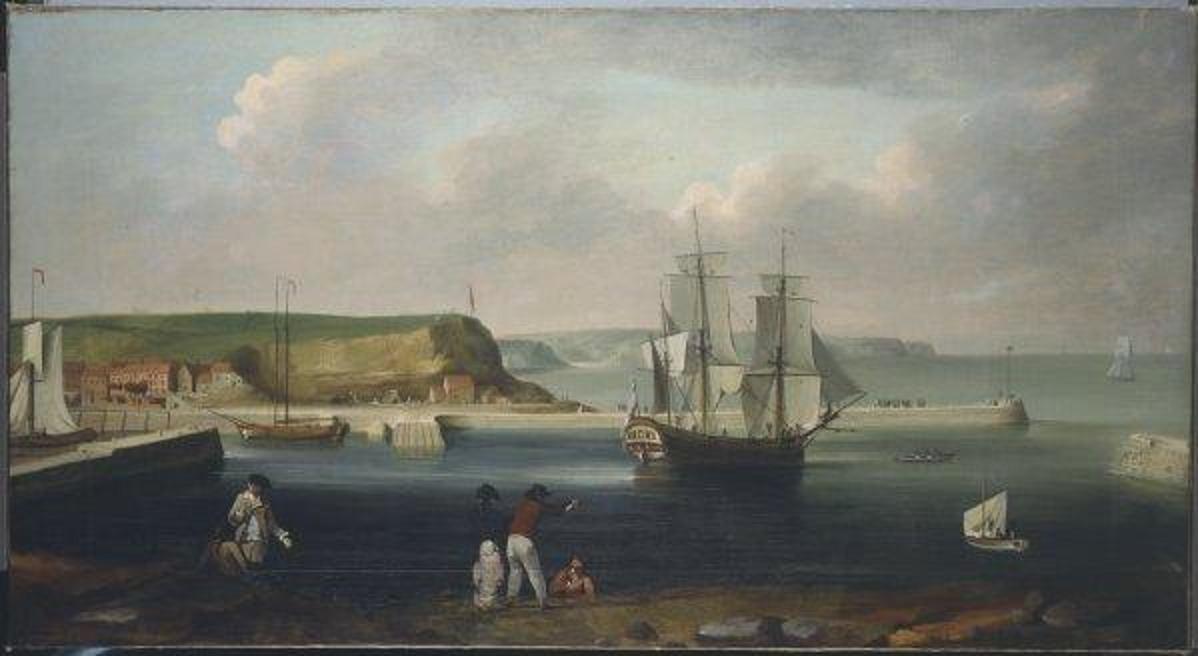It is evident, however, that Bennelong and Governor Phillip did share a special friendship. So when Phillip returned to England in 1792, Bennelong, who had learnt to speak English, accompanied him, along with another Aboriginal man named Yemmerrawanne, onboard the Atlantic.
Whist in London, Bennelong and Yemmerrawanne stayed with Henry Waterhouse, a British Naval Officer, at 125 Mount Street, Mayfair. However, Yemmerrawanne became ill with a chest infection and so, the pair moved to the residence of Edward Kent, at South End, Eltham, in the county of Kent.
Whist in London, Bennelong and Yemmerrawanne were provided with fashionable clothes suitable to the London scene. It is said that they were presented to King George III (contested) and that they visited many London attractions like the Tower of London, museums, St Paul's Cathedral and theatre performances.
 |
| An undated portrait thought to depict Bennelong, signed "W.W." now in the Dixson Galleries of the State Library of New South Wales |
A natural Comedian
It was reported in the London Observer, of Bennelong and Yemmerrawanne:
[T]hey seem constantly dejected, and every effort to make them laugh has been for many months ineffectual.
Sadly, Yemmerrawanne would die on the 18th of May 1794, in Kent, far from home. Bennelong is described by Captain John Hunter as being "broken in Spirit".
[T]hey seem constantly dejected, and every effort to make them laugh has been for many months ineffectual.
Bennelong who has been described as a natural comedian, afterwards seemed to have a return of good humour, as he is recorded as joking about experiencing the lack of his three wives, left back in Australia, with a reporter from the Oracle.
One of them, a very merry fellow, says, he regrets nothing so much as the inconvenience he finds in the absence of his three wives, for whom he had not yet been able to find a substitute in this country.
One of them, a very merry fellow, says, he regrets nothing so much as the inconvenience he finds in the absence of his three wives, for whom he had not yet been able to find a substitute in this country.
Sadly, Yemmerrawanne would die on the 18th of May 1794, in Kent, far from home. Bennelong is described by Captain John Hunter as being "broken in Spirit".
 |
| Yemmerrawanne's grave marker, St John the Baptist Churchyard Eltham, Royal Borough of Greenwich, Greater London, England |
Home Again
After being away from home for two years and 10 months, Bennelong arrived home 7 September 1795 on the HMS Reliance. In the following year, in a letter dictated by Bennelong, probably to his friend, the former, Governor Philip: "Not me go to England no more. I am at home now"
Bennelong died at Kissing Point on 3 January 1813 and he was buried in the orchard of his other close European friend, brewer James Squire, along with his last wife, Boorong.
Bennelong died at Kissing Point on 3 January 1813 and he was buried in the orchard of his other close European friend, brewer James Squire, along with his last wife, Boorong.



_-_Google_Art_Project.jpg)



